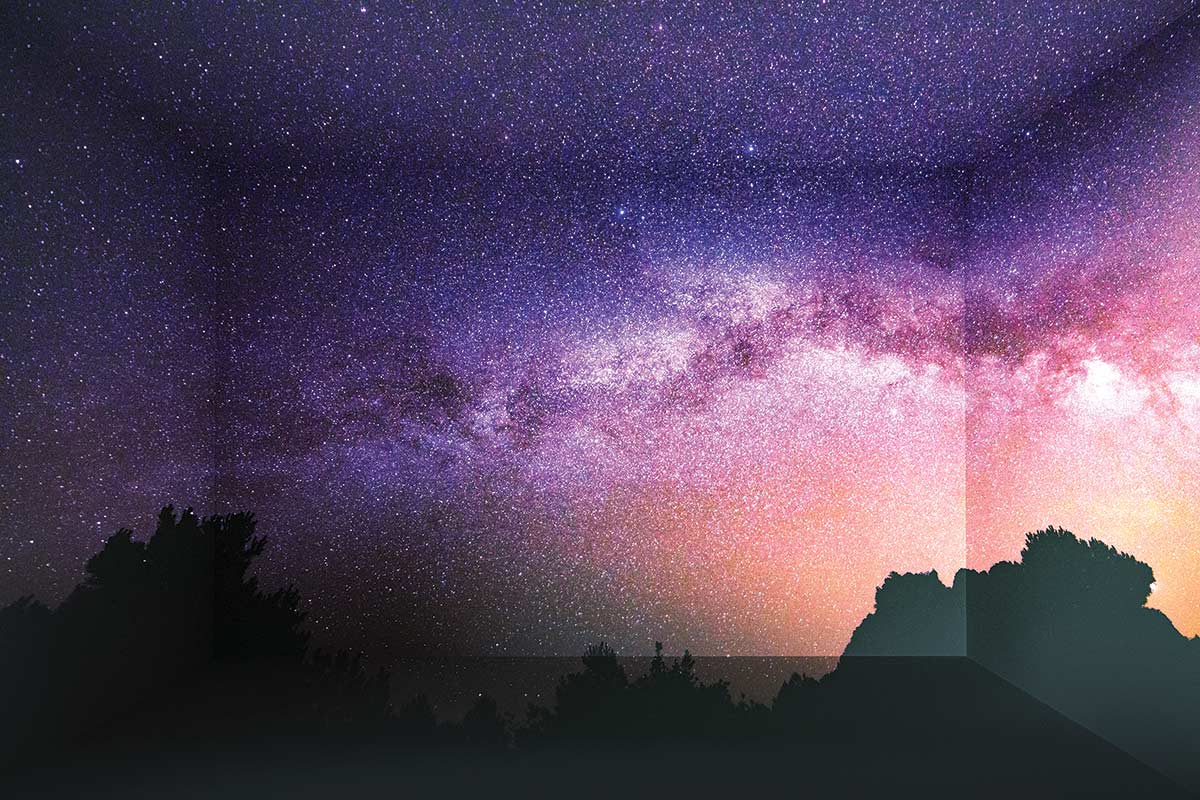Could the Universe Actually Be a Hologram?

Photo Credit: Artur Debat / Getty Images
By Lawrence Goodman
One of the weirdest theories in cosmology is the holographic principle, the idea that our universe is a three-dimensional image projected off a two-dimensional surface — the idea that, yes, we are living in a hologram.
The theory, which has been around since the 1990s and is now a mainstream scientific hypothesis, holds that the universe and everything in it is a three-dimensional projection from a two-dimensional plane. This plane is encoded with what physicists call “information,” the bits and bytes of computer code that give rise to the universe in its three-dimensional form.
But where is the two-dimensional plane located?
Associate professor of physics Brian Swingle and his collaborator, Mark Van Raamsdonk, a University of British Columbia physicist, have devised a possible explanation that is just as mind-blowing as the holographic principle itself. It involves imaginary time, a wormhole, and a doomsday concept in physics called the Big Crunch.
Originally, the holographic principle was conceived of to help solve a vexing riddle in physics: how to reconcile quantum mechanics, which explains the behavior of atoms, with Einstein’s theory of general relativity, which explains gravity and helps us understand vast distances of space. The answer, in its simplest terms, is that the mathematics governing the two-dimensional plane gives rise to the laws of general relativity as it scales up into our three-dimensional universe.
One possible location for the two-dimensional plane has long been thought to be the cosmic horizon, the distant surface beyond which light can never reach us. The information needed to produce our universe may have been encoded on it shortly after the Big Bang, 13.8 billion years ago.
While Swingle says this theory is certainly possible, it has a number of problems. For one, scientists still can’t fully explain the physics necessary to go from the cosmic horizon to our universe.
Part of the confusion is that, in the simplest models of the cosmic horizon, the universe continues to expand forever. Right now, the universe is expanding. Its rate of expansion is increasing as well. But Swingle says a universe that continues to expand ad infinitum is hard to understand using the principles of quantum physics.
These and other issues led Swingle and Van Raamsdonk to posit an alternative to the cosmic horizon. It starts with imaginary time.
Despite what the name suggests, imaginary time is not unreal or made up; it’s connected to imaginary numbers. Essentially, it involves multiplying the value of real time by the square root of negative 1. As a result, imaginary time ends up being more like space than our usual time. It is at the end of this new space that the holographic screen is supposed to live.
Now imagine a plane of space about the size of our universe that exists in imaginary time. According to Swingle and Van Raamsdonk, the information that gives rise to our universe is encoded on the ends of this plane. A wormhole, a tunnel-like connection through space-time, links both ends. This is because the information on the ends is entangled, thanks to a strange phenomenon in physics where subatomic particles are related to one another, even across vast distances.
In Swingle and Van Raamsdonk’s model, this plane of space in imaginary time interacts most directly with time in our universe about halfway through our universe’s lifetime, which is still in the future. As a consequence of this interaction, the current expansion of our universe will stop. The universe will begin contracting, eventually collapsing under its own gravity and ending in a black hole singularity, a scenario scientists call the Big Crunch.
How can any of this be proven? Swingle says it would require evidence that the universe’s current expansion will end and contraction will begin. In the meantime, Swingle thinks, we are learning a lot about what is needed to merge quantum physics and gravity.
If all this sounds like a mash-up of cosmological phenomena straight out of a “Star Trek” episode, you haven’t been following the field of theoretical physics. For at least a century, the field has been making weirder and weirder discoveries.
In a few years, Swingle and Van Raamsdonk’s theory may not sound strange at all.